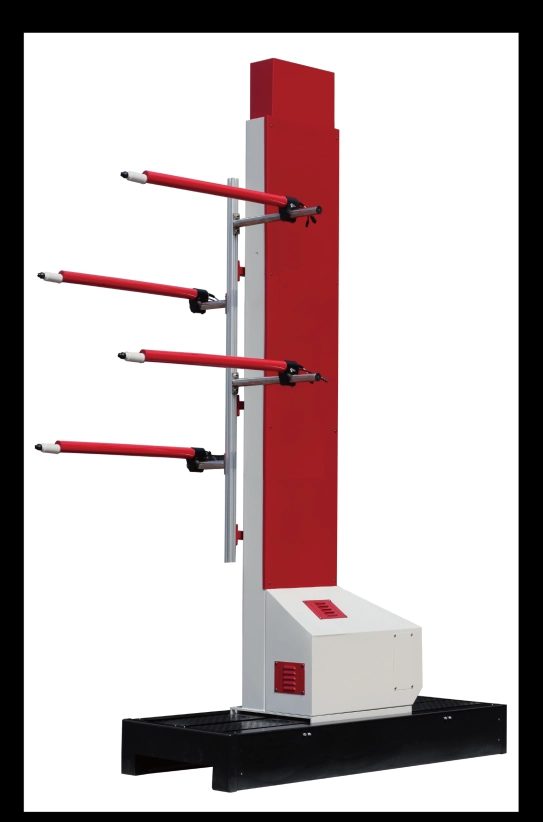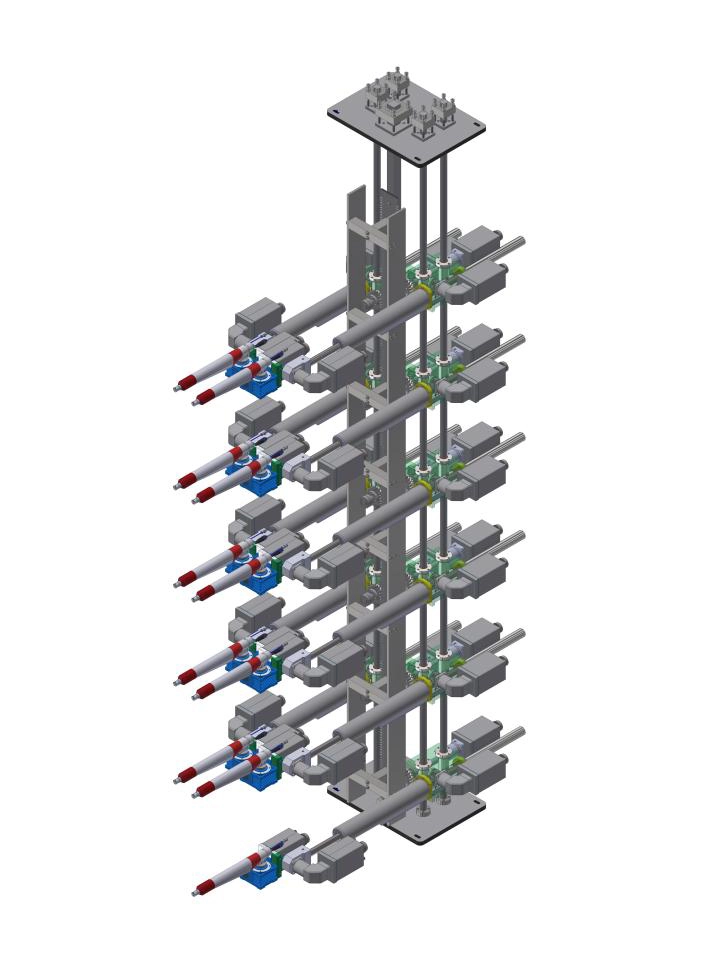Content Menu
● Understanding Your Coating Requirements
>> Types of Coatings
>> Viscosity and Solvent Content
>> Application Surface and Area
● Spray Gun Types and Their Suitability
>> Airspray Guns
>> Airless Spray Guns
>> HVLP (High Volume Low Pressure) Spray Guns
>> Electrostatic Spray Guns
● Matching Spray Gun Specifications to Your Needs
>> Pressure and Pump Capacity
>> Nozzle and Tip Size
>> Air Supply Requirements
>> Weight and Ergonomics
● Additional Features to Consider
>> Adjustable Settings
>> Easy Cleaning and Maintenance
>> Compatibility with Coating Types
● Practical Tips for Choosing the Right Spray Gun Unit
● Common Mistakes to Avoid
● Frequently Asked Questions (FAQs)
Selecting the right spray gun unit for your coating project is essential to achieving a smooth, durable, and professional finish. With various spray gun types, coatings, and application requirements, understanding the key factors involved can save time, material, and money while ensuring optimal results.

Understanding Your Coating Requirements
Types of Coatings
Different coatings have different characteristics that influence the choice of spray gun. Common coatings include:
- Latex paints: Water-based with lower viscosity.
- Epoxy and polyurethane: Typically higher viscosity and solvent-based.
- Gel coats: Thick and require precise application techniques.
- Automotive and industrial coatings: Often have complex formulas requiring precise atomization.
Knowing the coating type helps determine the pressure, nozzle size, and spray pattern needed for effective coverage.
Viscosity and Solvent Content
Viscosity refers to the thickness and flow resistance of the coating. Higher viscosity materials, such as epoxy or polyurethane, usually require spray guns capable of handling thicker fluids at higher pressures. Solvents can lower viscosity but affect drying times and pot life (the usable time of mixed coating).
Application Surface and Area
The surface texture, shape, and size affect spray gun selection:
- Smooth surfaces like metal or glass may need fine atomization.
- Rough or uneven surfaces may require a wider spray pattern for better coverage.
- Large areas often benefit from high-capacity units with greater flow rates.
Spray Gun Types and Their Suitability
Airspray Guns
Airspray guns use compressed air to atomize and propel the coating. They provide excellent finish quality and control, making them ideal for automotive, furniture, and precise finishing.
- Advantages: Smooth finish, good atomization.
- Limitations: Higher overspray and material wastage, lower transfer efficiency.
Airless Spray Guns
Airless spray guns pump coating at high pressure through a small nozzle to atomize the material without compressed air.
- Advantages: Handles high-viscosity coatings well, fast coverage, less overspray.
- Limitations: Less precise than airspray, may require higher skill.
HVLP (High Volume Low Pressure) Spray Guns
HVLP guns use a high volume of air at low pressure to atomize paint, offering a balance between airspray and airless.
- Advantages: Reduced overspray, environmentally friendly, good transfer efficiency.
- Limitations: Limited to coatings with suitable viscosity, slower than airless for large areas.
Electrostatic Spray Guns
These guns charge the paint particles to attract them electrostatically to the grounded surface, improving transfer efficiency.
- Advantages: Excellent material usage, uniform coating, less overspray.
- Limitations: Requires compatible coatings and grounded surfaces, higher equipment cost.
Matching Spray Gun Specifications to Your Needs
Pressure and Pump Capacity
The pressure at which the coating is delivered affects atomization and spray pattern quality. Higher pressure is necessary for thicker materials. The pump capacity must match the required flow rate to maintain consistent spray coverage without frequent stops.
Nozzle and Tip Size
Nozzle size determines the width and flow of the spray:
- Smaller nozzles for thin coatings and detail work.
- Larger nozzles for thick coatings and broader coverage.
The spray tip must be matched to the coating viscosity and application demands.
Air Supply Requirements
Airspray and HVLP guns rely on a stable air supply, typically from an air compressor.
- Ensure your compressor can deliver the required CFM (cubic feet per minute) at the specified PSI (pounds per square inch).
- Inadequate air supply causes poor atomization and an uneven finish.
Weight and Ergonomics
For handheld spray guns, consider ergonomics and weight, especially for long projects. A comfortable grip reduces operator fatigue and improves control.
Additional Features to Consider
Adjustable Settings
Look for spray guns with adjustable:
- Fluid control (the amount of coating flow).
- Air control (spray shape and pressure).
- Fan pattern (width and shape of the spray).
Adjustability enhances versatility for different coatings and surfaces.
Easy Cleaning and Maintenance
Spray guns with easily detachable parts simplify cleaning, which is crucial to prevent clogs and maintain performance.
Compatibility with Coating Types
Some materials require components resistant to harsh solvents or abrasive particles. Check that the spray gun materials and seals are compatible with your coating to avoid damage.
Practical Tips for Choosing the Right Spray Gun Unit
1. Define your project scope: Small touch-ups vs. large-scale jobs influence gun size and capacity.
2. Test with your coating: Trial sprays help check spray pattern, finish, and gun handling.
3. Consult experts or manufacturers: They can recommend specific models for your coating chemistry and application method.
4. Consider total cost of ownership: Include initial cost, consumables, maintenance, and efficiency savings.
5. Verify power source compatibility: Electrical, pneumatic, or battery power can affect portability and setup.
Common Mistakes to Avoid
- Selecting a gun based only on price rather than coating compatibility.
- Ignoring air supply adequacy for air-driven guns.
- Using the wrong nozzle size for the coating viscosity.
- Neglecting ease of cleaning, which can lead to downtime.
Frequently Asked Questions (FAQs)
Q1: Can one spray gun handle all types of coatings?
A1: No, spray guns are designed with specific pressure ranges, nozzle sizes, and materials in mind. Selecting the right gun depends on coating viscosity, application method, and finish quality needed.
Q2: What is the difference between airless and HVLP spray guns?
A2: Airless spray guns atomize paint by pumping it at high pressure without using air, suitable for thick coatings and fast coverage. HVLP guns use lower pressure air volume to atomize paint for less overspray and higher transfer efficiency.
Q3: How important is nozzle size?
A3: Nozzle size affects spray width and flow rate. Using the wrong size can cause poor coverage, runs, or orange peel finish.
Q4: Can I use a spray gun with any compressor?
A4: No, compressor output (CFM and PSI) must match the spray gun requirements to ensure proper atomization and finish quality.
Q5: How do I maintain and clean my spray gun?
A5: Clean the spray gun immediately after use with appropriate solvents, dismantle parts for thorough cleaning, and regularly check seals and nozzles for wear to maintain performance.

[1] https://www.graco.com/us/en/contractor/solutions/articles/how-to-select-an-industrial-coatings-sprayer.html
[2] https://patents.google.com/patent/CN110523557B/en
[3] https://www.youtube.com/watch?v=aMYT03LGe7M
[4] https://www.academia.edu/37975547/Spray_guns_All_about_its_use_parts_and_types
[5] https://www.youtube.com/watch?v=laxP8o99dwA
[6] https://www.academia.edu/49193248/Automotive_Spray_Gun_Technologies
[7] https://www.youtube.com/watch?v=r5gHK0iZQTw
[8] https://patents.google.com/patent/CN207823243U/zh
[9] https://www.reddit.com/r/Tools/comments/19ddklf/question_about_paint_guns_and_cfmpsi_requirements/
[10] https://patents.google.com/patent/CN218222976U/zh
Hot Tags: China, Global, OEM, private label, manufacturers, factory, suppliers, manufacturing company










































 .
. 